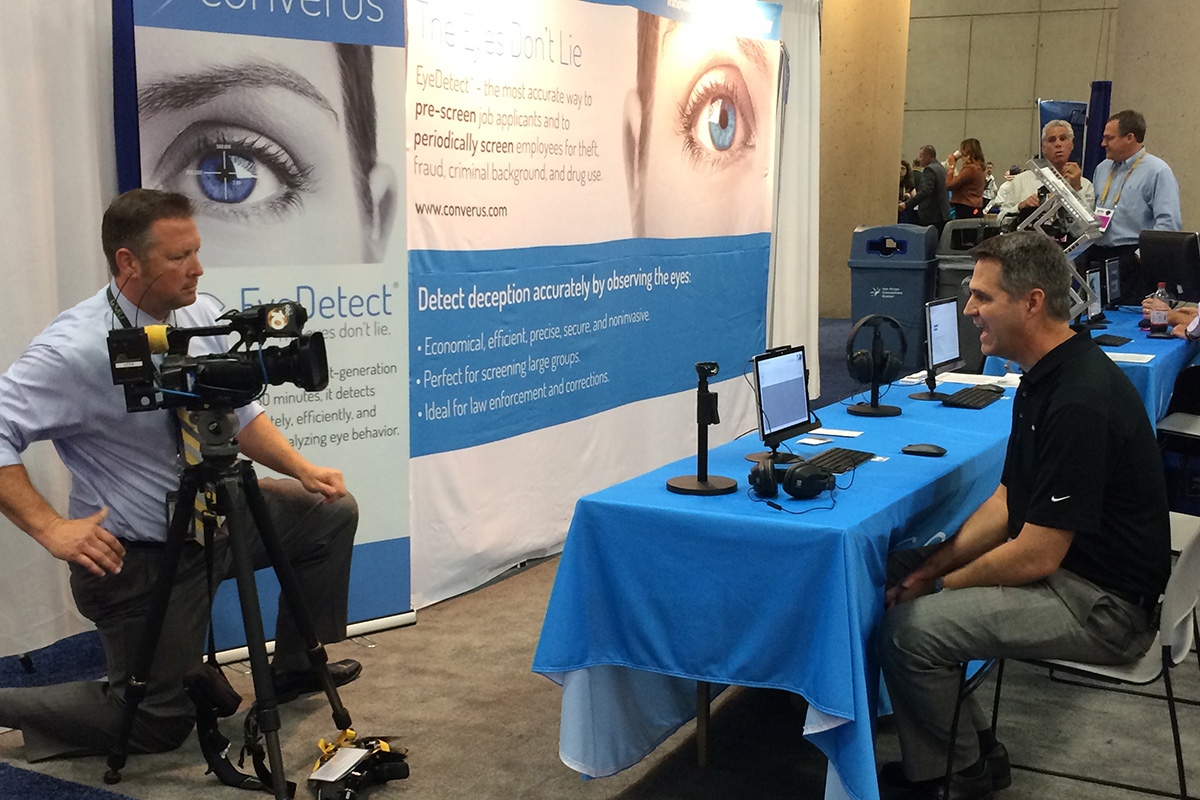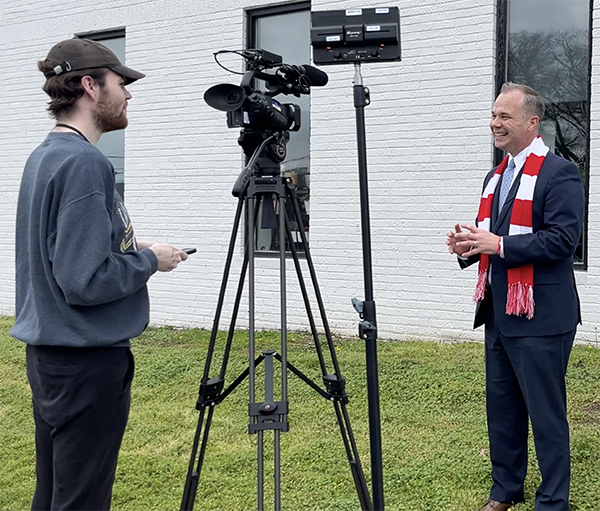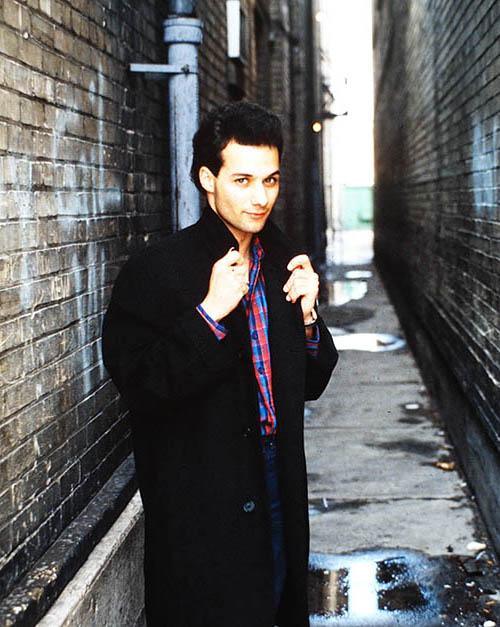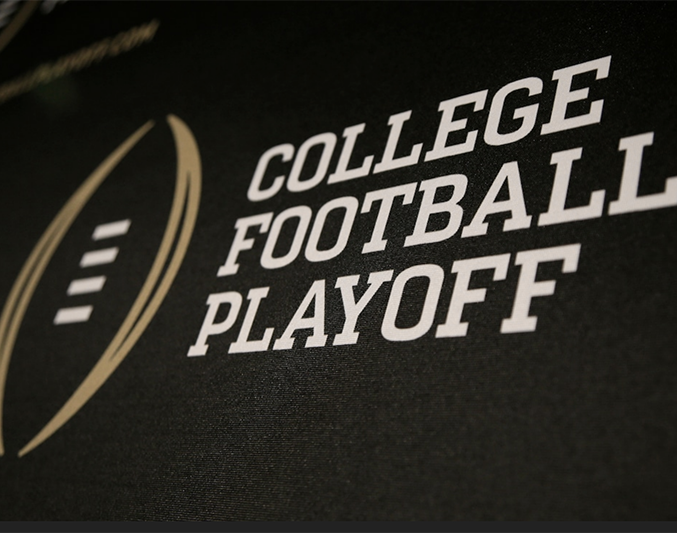
So, you’ve completed the previous five press relations lessons…
- Intro to press relations (01.17.2025)
- Selecting news outlets and contacts (01.24.2025)
- Organizing your press list (01.31.2025)
- Preparing your press materials (02.07.2025)
- Working your press list (02.14.2025)
- THIS WEEK: Preparing for the interview (02.20.2025)
- Leveraging your press coverage
…and you’ve landed your first press interview — right? Well, congratulations!
Now, let’s make sure you don’t blow it.
Never, ever think you can just wing an interview. That’s a surefire way to ramble, miss key messages, or — worst of all — say something you’ll regret.
Reporters have a job to do: get a compelling, accurate story. Your job? Be prepared, be quotable, and help them shape the story in a way that benefits both their audience and your brand.
Here are 10 tips to ensure your next interview goes smoothly.
1. Get Media Training (Seriously, Do It)
If you’ve never been interviewed before — or even if you have — media training is invaluable. A good media coach will teach you:
- How to stay on message
- How to handle tough or unexpected questions
- How to speak in soundbites (essential for TV and radio)
- How to control the pace and direction of the conversation
- How to interact with the reporter
- For TV: What to wear, where to look
If you’re working with a PR pro, ask them to run you through a practice session. It’s one thing to know what to say—it’s another to be able to say it under pressure.
2. Anticipate Questions & Rehearse Your Answers
Think like a reporter: What are the top 5-10 questions they’re likely to ask? If you were covering this story, what would you want to know?
A good PR pro will draft a list of suggested questions and provide them to the reporter in advance. This helps guide the conversation and keeps you from being blindsided.
Rehearse your answers until they’re second nature — but don’t sound robotic. The goal is to be prepared and natural-sounding, not scripted.
3. Tell Stories, Not Just Facts
Want to be memorable? Ditch the jargon and heavy data.
Instead, focus on storytelling. Real-life examples and personal anecdotes resonate far more than statistics. People remember stories, not numbers.
Data has its place, but use it sparingly. If you must share stats, tie them to a story. Example: Instead of saying, “Our product has reduced customer complaints by 42%,” try:
“Before we launched this, our support team was flooded with calls about [problem]. Now, complaints have dropped by almost half, and customers tell us they finally feel heard.”
Much more engaging, right?
4. Control the Message (Without Sounding Controlling)
Yes, the reporter decides what gets published/reported, but you have more influence than you think. Here’s how to guide the narrative:
- Stay on message—keep bringing the conversation back to your key points
- If a question doesn’t align with your key messages, pivot: “That’s a great question, but what’s really important here is…”
- If the conversation veers off course, steer it back with a relevant story
And if you’re working with a PR pro, have them provide a “suggested questions” list to the reporter ahead of time. Most will appreciate the guidance.

5. Master the Medium: Print, Radio, TV & Podcasts
Every interview format has its distinct features. Here’s how to handle each one:
- Newspaper & Magazine: If it’s a news piece, expect direct, fact-based questions. If it’s a feature, you’ll have more room to expand on your story. Either way, be quotable.
- Radio: Shorter answers work best. Expect more back-and-forth with the host.
- TV: What you wear and how you carry yourself matter. Keep your posture straight, avoid distracting clothing (no busy patterns), and maintain a slight, natural smile — even when you’re not talking. And above all, never talk to or look at the camera. Forget it’s even there. Look at the reporter asking you the questions. View it as a conversation.
- Podcasts: You’ll usually have more time than on traditional radio. Keep it conversational, but don’t ramble.
6. Smile — Yes, Even on Radio
Your voice changes when you smile. Seriously.
If you sound flat or disengaged, audiences pick up on that. Whether you’re on radio, a podcast, or even a print interview over the phone, smile while you talk. It makes a difference.
7. Don’t Say This (Because Everyone Does)
“Thanks for having me on.”
It’s the most overused, generic phrase in media interviews. I cringe every time I hear it. That means I cringe a lot. To set yourself apart from the masses right from the get-go, say anything but that nicety-turned-cliche. Try:
- “I’m looking forward to our conversation.”
- “Thank you. It’s great to be on your show.”
- “Thanks – I’ve always wanted to meet you in person.”
- “Thanks – looking forward to speaking with your audience today.”
You get the idea.
Then jump straight into something compelling, like:
- “I’m ready to tackle your first questions.”
- “I love talking about this topic because…”
8. NEVER Ask to Review the Article Before It’s Published
A client of mine recently asked a reporter for an online news website if he could review a story before publication. Huge mistake. But to be honest, that mistake started with ME. I forgot to mention that during our media training. Whoops.
In journalism, this is a no-go. It suggests you don’t trust the reporter to get it right — and it can make you look amateurish.
Instead, if you want to ensure accuracy, offer to clarify anything post-interview. For example, “Let me know if you need any additional details or fact-checking.” That keeps the door open without overstepping.
There are times when a print reporter will send you their story to review for accuracy. But those times are rare.
9. Be Prepared for Tough Questions
Not every interview is going to be a softball.
If there’s a sensitive issue related to your business, assume it will come up. Plan how you’ll handle it.
The best approach? Acknowledge, address and redirect. Example:
- Reporter: “Your company faced backlash last year over [controversy]. What’s changed?”
- Really Bad Response: “No comment.”
- Bad Response: “Uh… we don’t really talk about that.”
- Better Response: “That was a tough time, and we took it seriously and learned a lot. We’ve done our best to make things right by [briefly outline the change]. Our focus now is [redirect to positive news].”
10. End Strong & Stay Connected
Don’t just let the interview fizzle out. Wrap it up with a key takeaway or a call to action.
Example: “At the end of the day, what we’re really about is [your core message]. If people want to learn more, they can [mention website, event, etc.].”
And please, please, please — when sharing your website, leave out the “www.” It’s a waste of time and makes you sound like Porky Pig. Just say the essential part.
Also, stay in touch with the reporter. A quick follow-up email or card thanking them (without asking to see the article) keeps the relationship going for future coverage.
The 3 Big Takeaways
- You can in part control the narrative — If you prepare properly.
- Be quotable — Short, engaging soundbites beat long-winded explanations.
- Know the differences between the various media — Print, TV, radio and podcasts require specific interviewee tactics.
Next up: Leveraging Your Press Coverage — because landing an interview is just the start. This will conclude your 7-part press relations training. (Whew!)
Questions about preparing for a press interview? Hit me up.
Stay authentic… and press worthy!

Jeffery E. Pizzino, APR (seen here in a vintage photo circa 1983 serendipitously doing a Clash impersonation in a since-forgotten location) is a spin-free public relations pro who is passionate about telling the why of your story with clarity, impact and authenticity. He began his PR career in 1987 at Ketchum Public Relations in New York City but has spent the majority of his career as a solopreneur. He’s AuthenticityPR’s Chief Authentic Officer and also functions as the fractional CCO for technology startup Converus.
Jeff has an MBA in Management from Western International University and a Bachelor of Arts degree in Communications — with an emphasis in PR — from Brigham Young University. He’s a native of Milwaukee, Wisconsin, but also holds an Italian citizenship. Jeff and his storyteller wife Leticia have four children and four grandchildren. In his extremely limited nonwork hours, he studies italiano, practices guitar, write songs, gardens, disc golfs, reads, listens to New Wave music, serves in his church, watches BYU football, and plays Dominion and Seven Wonders. Email Jeff.

